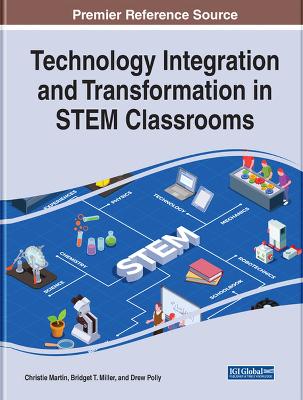Inquiry-based Science Education
 portes grátis
portes grátis
Inquiry-based Science Education
Gillies, Robyn M.
Taylor & Francis Ltd
10/2024
122
Mole
9781032930794
Pré-lançamento - envio 15 a 20 dias após a sua edição
Descrição não disponível.
Chapter 1: Inquiry-based science
BACKGROUND
INQUIRY-BASED SCIENCE
USING INQUIRY-BASED SCIENCE TO CHALLENGE THINKING
Cooperative Learning Activities
Strategies to help students learn to work cooperatively together
Group size
Group composition.
Type of task
Individual reflection activity
Group's Action Plan
Characteristics of Complex Tasks
CHALLENGES IMPLEMENTING INQUIRY-BASED SCIENCE
CHAPTER SUMMARY
ADDITIONAL READINGS
Chapter 2: Visual, embodied and language representations in teaching inquiry based-science: A case study
INTRODUCTION
TYPES OF REPRESENTATIONS
Purpose of the case study
METHOD
Context for the study
Inquiry-based science unit
Data collection
Teacher measures
RESULTS AND DISCUSSION
The inquiry-based science lessons
Lesson 1: Engage
Lesson 2: Explore
Lesson 3: Explain
Lesson 4: Elaborate
Lesson 5: Evaluate
CHAPTER SUMMARY
ADDITIONAL READINGS
Chapter 3: Developing scientific literacy
INTRODUCTION
BACKGROUND
SCIENTIFIC LITERACY
Questions that challenge children's understandings
Question Stems and Cognitive Processes
The discourse of science
Encouraging audience participation
Linguistic Tools that promote student discussion
Accountable Talk
Exploratory Talk
Philosophy for Children (P4C)
CHAPTER SUMMARY
ADDITIONAL READINGS
Chapter 4: Promoting scientific discourse
INTRODUCTION
DIALOGIC TEACHING
Example of Dialogic Teaching
Dialogic interactions in a cooperative group setting
STRATEGIES TO PROMOTE DIALOGIC INTERACTIONS
DIALOGIC STRATEGIES FOR STUDENTS
Critical Thinking Skills
CHAPTER SUMMARY
ADDITIONAL READINGS
Chapter 5: Structuring cooperative learning to promote social and academic learning
INTRODUCTION
COOPERATIVE LEARNING
BENEFITS OF COOPERATIVE LEARNING
Advantages of small, cooperative group instruction
Types of cooperative learning groups
KEY ELEMENTS IN COOPERATIVE LEARNING
Skills that Facilitate Interpersonal Communication
STRATEGIES FOR CONSTRUCTING COOPERATION IN GROUPS
STRATEGIES FOR ASSESSING COOPERATIVE LEARNING
CHAPTER SUMMARY
ADDITIONAL READINGS
Chapter 6: The Structure of Observed Learning Outcomes (SOLO) Taxonomy: Assessing students' reasoning, problem-solving and learning
INTRODUCTION
THE SOLO TAXONOMY
FIVE LEVELS OF THE SOLO TAXONOMY
INTENDED LEARNING OUTCOMES
Examples of the increasing complexity in students' language: Using the SOLO Taxonomy
CHAPTER SUMMARY
ADDITIONAL READINGS
BACKGROUND
INQUIRY-BASED SCIENCE
USING INQUIRY-BASED SCIENCE TO CHALLENGE THINKING
Cooperative Learning Activities
Strategies to help students learn to work cooperatively together
Group size
Group composition.
Type of task
Individual reflection activity
Group's Action Plan
Characteristics of Complex Tasks
CHALLENGES IMPLEMENTING INQUIRY-BASED SCIENCE
CHAPTER SUMMARY
ADDITIONAL READINGS
Chapter 2: Visual, embodied and language representations in teaching inquiry based-science: A case study
INTRODUCTION
TYPES OF REPRESENTATIONS
Purpose of the case study
METHOD
Context for the study
Inquiry-based science unit
Data collection
Teacher measures
RESULTS AND DISCUSSION
The inquiry-based science lessons
Lesson 1: Engage
Lesson 2: Explore
Lesson 3: Explain
Lesson 4: Elaborate
Lesson 5: Evaluate
CHAPTER SUMMARY
ADDITIONAL READINGS
Chapter 3: Developing scientific literacy
INTRODUCTION
BACKGROUND
SCIENTIFIC LITERACY
Questions that challenge children's understandings
Question Stems and Cognitive Processes
The discourse of science
Encouraging audience participation
Linguistic Tools that promote student discussion
Accountable Talk
Exploratory Talk
Philosophy for Children (P4C)
CHAPTER SUMMARY
ADDITIONAL READINGS
Chapter 4: Promoting scientific discourse
INTRODUCTION
DIALOGIC TEACHING
Example of Dialogic Teaching
Dialogic interactions in a cooperative group setting
STRATEGIES TO PROMOTE DIALOGIC INTERACTIONS
DIALOGIC STRATEGIES FOR STUDENTS
Critical Thinking Skills
CHAPTER SUMMARY
ADDITIONAL READINGS
Chapter 5: Structuring cooperative learning to promote social and academic learning
INTRODUCTION
COOPERATIVE LEARNING
BENEFITS OF COOPERATIVE LEARNING
Advantages of small, cooperative group instruction
Types of cooperative learning groups
KEY ELEMENTS IN COOPERATIVE LEARNING
Skills that Facilitate Interpersonal Communication
STRATEGIES FOR CONSTRUCTING COOPERATION IN GROUPS
STRATEGIES FOR ASSESSING COOPERATIVE LEARNING
CHAPTER SUMMARY
ADDITIONAL READINGS
Chapter 6: The Structure of Observed Learning Outcomes (SOLO) Taxonomy: Assessing students' reasoning, problem-solving and learning
INTRODUCTION
THE SOLO TAXONOMY
FIVE LEVELS OF THE SOLO TAXONOMY
INTENDED LEARNING OUTCOMES
Examples of the increasing complexity in students' language: Using the SOLO Taxonomy
CHAPTER SUMMARY
ADDITIONAL READINGS
Este título pertence ao(s) assunto(s) indicados(s). Para ver outros títulos clique no assunto desejado.
Inquiry Based Science Unit;metacognitive thinking;Inquiry Based Science Lessons;SOLO taxonomy;Inquiry Based Science Education;teacher-student interactions;Inquiry Based Science;scientific literacy;Teach Inquiry Science;inquiry-based science activities;Informal Cooperative Learning;Student's Developmental Level;Modified Mercalli Scales;Cooperative Learning;CBL;Pre-structural Level;Data Sets;Students Engage;Unistructural Level;Dialogic Teaching;Structure Cooperative Learning;Small Group Skills;Knowledge Building Practices;Discipline Specific Language;Inquiry Science Activities;Positive Interdependence;Accountable Talk;Exploratory Talk;Cooperative Group Instruction
Chapter 1: Inquiry-based science
BACKGROUND
INQUIRY-BASED SCIENCE
USING INQUIRY-BASED SCIENCE TO CHALLENGE THINKING
Cooperative Learning Activities
Strategies to help students learn to work cooperatively together
Group size
Group composition.
Type of task
Individual reflection activity
Group's Action Plan
Characteristics of Complex Tasks
CHALLENGES IMPLEMENTING INQUIRY-BASED SCIENCE
CHAPTER SUMMARY
ADDITIONAL READINGS
Chapter 2: Visual, embodied and language representations in teaching inquiry based-science: A case study
INTRODUCTION
TYPES OF REPRESENTATIONS
Purpose of the case study
METHOD
Context for the study
Inquiry-based science unit
Data collection
Teacher measures
RESULTS AND DISCUSSION
The inquiry-based science lessons
Lesson 1: Engage
Lesson 2: Explore
Lesson 3: Explain
Lesson 4: Elaborate
Lesson 5: Evaluate
CHAPTER SUMMARY
ADDITIONAL READINGS
Chapter 3: Developing scientific literacy
INTRODUCTION
BACKGROUND
SCIENTIFIC LITERACY
Questions that challenge children's understandings
Question Stems and Cognitive Processes
The discourse of science
Encouraging audience participation
Linguistic Tools that promote student discussion
Accountable Talk
Exploratory Talk
Philosophy for Children (P4C)
CHAPTER SUMMARY
ADDITIONAL READINGS
Chapter 4: Promoting scientific discourse
INTRODUCTION
DIALOGIC TEACHING
Example of Dialogic Teaching
Dialogic interactions in a cooperative group setting
STRATEGIES TO PROMOTE DIALOGIC INTERACTIONS
DIALOGIC STRATEGIES FOR STUDENTS
Critical Thinking Skills
CHAPTER SUMMARY
ADDITIONAL READINGS
Chapter 5: Structuring cooperative learning to promote social and academic learning
INTRODUCTION
COOPERATIVE LEARNING
BENEFITS OF COOPERATIVE LEARNING
Advantages of small, cooperative group instruction
Types of cooperative learning groups
KEY ELEMENTS IN COOPERATIVE LEARNING
Skills that Facilitate Interpersonal Communication
STRATEGIES FOR CONSTRUCTING COOPERATION IN GROUPS
STRATEGIES FOR ASSESSING COOPERATIVE LEARNING
CHAPTER SUMMARY
ADDITIONAL READINGS
Chapter 6: The Structure of Observed Learning Outcomes (SOLO) Taxonomy: Assessing students' reasoning, problem-solving and learning
INTRODUCTION
THE SOLO TAXONOMY
FIVE LEVELS OF THE SOLO TAXONOMY
INTENDED LEARNING OUTCOMES
Examples of the increasing complexity in students' language: Using the SOLO Taxonomy
CHAPTER SUMMARY
ADDITIONAL READINGS
BACKGROUND
INQUIRY-BASED SCIENCE
USING INQUIRY-BASED SCIENCE TO CHALLENGE THINKING
Cooperative Learning Activities
Strategies to help students learn to work cooperatively together
Group size
Group composition.
Type of task
Individual reflection activity
Group's Action Plan
Characteristics of Complex Tasks
CHALLENGES IMPLEMENTING INQUIRY-BASED SCIENCE
CHAPTER SUMMARY
ADDITIONAL READINGS
Chapter 2: Visual, embodied and language representations in teaching inquiry based-science: A case study
INTRODUCTION
TYPES OF REPRESENTATIONS
Purpose of the case study
METHOD
Context for the study
Inquiry-based science unit
Data collection
Teacher measures
RESULTS AND DISCUSSION
The inquiry-based science lessons
Lesson 1: Engage
Lesson 2: Explore
Lesson 3: Explain
Lesson 4: Elaborate
Lesson 5: Evaluate
CHAPTER SUMMARY
ADDITIONAL READINGS
Chapter 3: Developing scientific literacy
INTRODUCTION
BACKGROUND
SCIENTIFIC LITERACY
Questions that challenge children's understandings
Question Stems and Cognitive Processes
The discourse of science
Encouraging audience participation
Linguistic Tools that promote student discussion
Accountable Talk
Exploratory Talk
Philosophy for Children (P4C)
CHAPTER SUMMARY
ADDITIONAL READINGS
Chapter 4: Promoting scientific discourse
INTRODUCTION
DIALOGIC TEACHING
Example of Dialogic Teaching
Dialogic interactions in a cooperative group setting
STRATEGIES TO PROMOTE DIALOGIC INTERACTIONS
DIALOGIC STRATEGIES FOR STUDENTS
Critical Thinking Skills
CHAPTER SUMMARY
ADDITIONAL READINGS
Chapter 5: Structuring cooperative learning to promote social and academic learning
INTRODUCTION
COOPERATIVE LEARNING
BENEFITS OF COOPERATIVE LEARNING
Advantages of small, cooperative group instruction
Types of cooperative learning groups
KEY ELEMENTS IN COOPERATIVE LEARNING
Skills that Facilitate Interpersonal Communication
STRATEGIES FOR CONSTRUCTING COOPERATION IN GROUPS
STRATEGIES FOR ASSESSING COOPERATIVE LEARNING
CHAPTER SUMMARY
ADDITIONAL READINGS
Chapter 6: The Structure of Observed Learning Outcomes (SOLO) Taxonomy: Assessing students' reasoning, problem-solving and learning
INTRODUCTION
THE SOLO TAXONOMY
FIVE LEVELS OF THE SOLO TAXONOMY
INTENDED LEARNING OUTCOMES
Examples of the increasing complexity in students' language: Using the SOLO Taxonomy
CHAPTER SUMMARY
ADDITIONAL READINGS
Este título pertence ao(s) assunto(s) indicados(s). Para ver outros títulos clique no assunto desejado.
Inquiry Based Science Unit;metacognitive thinking;Inquiry Based Science Lessons;SOLO taxonomy;Inquiry Based Science Education;teacher-student interactions;Inquiry Based Science;scientific literacy;Teach Inquiry Science;inquiry-based science activities;Informal Cooperative Learning;Student's Developmental Level;Modified Mercalli Scales;Cooperative Learning;CBL;Pre-structural Level;Data Sets;Students Engage;Unistructural Level;Dialogic Teaching;Structure Cooperative Learning;Small Group Skills;Knowledge Building Practices;Discipline Specific Language;Inquiry Science Activities;Positive Interdependence;Accountable Talk;Exploratory Talk;Cooperative Group Instruction







